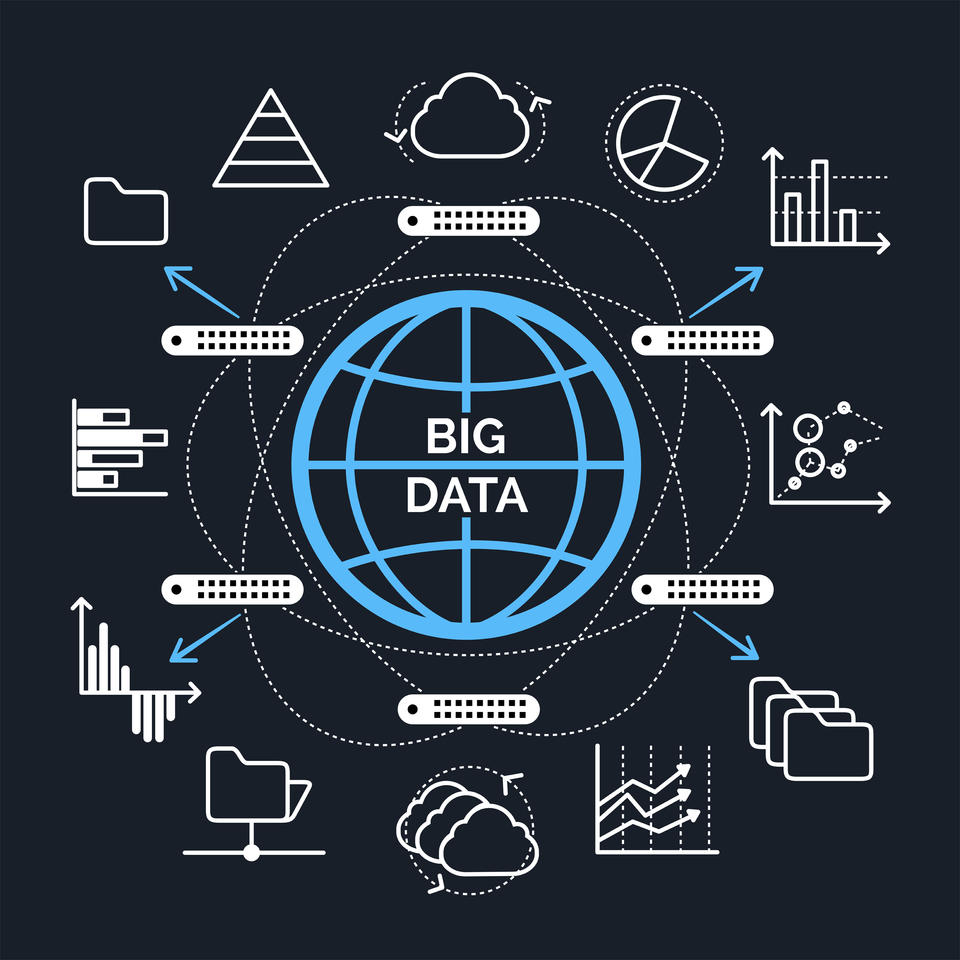Blogrige
The Official Baldrige Blog

big data
The catch words in many research papers and business briefs today are big data, data analytics, and digital integration. Whatever it is called and no matter how large or small an enterprise, analysis of data is becoming more important for "business" success, customer engagement, and long-term organizational survival.
In 2001, Mark Laney of META Group (now Gartner) identified the three big challenges of big data as volume, velocity, and variety.
Tim McGuire of McKinsey has subsequently defined the three challenges of big data analytics as deciding which data to use, handling analytics, and using the insights you have gained to transform operations.
While all these challenges are very real, they do not fully describe the big data challenge, which in my opinion is choosing, synthesizing, analyzing, interpreting, and acting operationally and strategically. A significant part of the challenge is that data are mono-dimensional (e.g. pie charts, social media commentary, customer feedback) or two-dimensional (x-axis, y-axis) comparing two important measurement dimensions (e.g., productivity, profitability, ROI, customer satisfaction characteristics and their relative importance), while our needs are three-dimensional and four-dimensional.
For operational improvement, we generally want "relatively simple" analysis of two-dimensional data, to which we want to add a third dimension, such as time or segmentation by some groupings (e.g. customer segments). There are software packages that will handle these analyses, if we ask the right questions or even ask for software help in defining the questions.
The real challenge is the strategic domain. In this domain we want analytics to give us a three-dimensional full-color operational image, with a fourth dimension of current state and desired or predicted future states of organizational performance, technologies, people and markets served. From those data-based, fact-based pictures we then want to develop strategy or strategic scenarios. Therein, I believe, lies the real challenge and potential of big data and what I would prefer to call information analytics. It requires not just data, but knowledge, insight, and a mindset for intelligent risk taking and innovation.
I hope to explore information analytics further and look at implications for future Baldrige Excellence Framework and Criteria considerations. I also hope you will help me explore the combination of information analytics with trends such as strategic ecosystems, the partnering of several enterprises to accomplish something new or unachievable by any of the partners acting alone. The latter is a certainty for the future and will further challenge our information analytics capabilities.
While I ponder these thoughts, I invite your commentary and input!
About the author
Related Posts
Comments
- Reply





